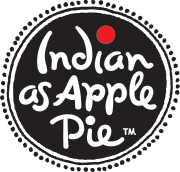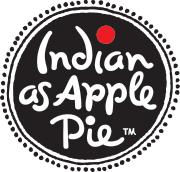May 02, 2024


I have been obsessed with cooking kabuli chana or white chickpeas lately as I translate my Instant Pot recipes to stovetop. Cooking chickpeas on the stovetop has always been my pain point - it just feels like it takes forever and sometimes they don't soften. But, why? Argh!
So, I got to thinking, what's the best and most efficient way to get soft chickpeas every time? Take a look at the photo above - two very different sized chickpeas, the same exact recipe, but different cooking techniques. Both were soaked in water overnight, both were cooked from dried chickpeas (not canned), and in both I used the exact same amount of chickpea to water ratio. But, in the one on the left, the chickpeas were cooked with the other ingredients, and in the one on the right they were cooked just in water first. It made all the difference. Here are some tips.
To soak or not to soak? I would say with chickpeas, soaking them at least 6 hours in water is important and gives you a head start to the softening process. You can use boiled, hot water rather than room temperature water to speed up this process. Regardless of the temperature of the water, however, after 6 hours or more the resulting size of the chickpea is comparable. What this says to me is that if you don't have a ton of time - just an hour or so, using the boiled, hot water will speed up the process. But if you remember to soak them overnight and soak them 6-10 hours, then using room temperature water is sufficient.
Add baking soda or not? Some add baking soda to chickpeas to help soften their outer peal, make them more digestible, and make them plump up. The alkaline environment created by the baking soda helps break down the pectins in the beans and softens them. You don't need much, about 1 teaspoon of baking soda to a cup of chickpeas. Some even recommend cooking the chickpeas with the baking soda.
Here, my feelings are mixed. If using baking soda, you should rinse the beans to get rid of any residue. I would prefer to only rinse after the beans have soaked because if you rinse them after cooking, you also discard valuable chickpea cooking water called aquafaba. This cooking water is valuable for thickening your curry/stew and has nutrients in it from the chickpeas (though not protein or fiber).
In our home, we never used baking soda. I find it's more critical to buy the freshest dried chickpeas from a trusted source. Note that we sell many beans and lentils on this website and always work with the most trusted suppliers and farmers in India and beyond.
The chickpeas cooked in the photo above were both cooked without baking soda. But, why in the one on the left do the chickpeas look smaller and on the right more plump? Here's the difference: The chickpeas on the left were cooked in the tarka/masala, while the ones on the right were cooked in plain water, and then the tarka/masala was added. This step made all the difference.
A good chana masala has tomatoes in it. Tomatoes are acidic. This acidity slows the chickpea cooking process down. And now we can see how much ourselves with my side-by-side comparison. Wow! It's such a difference that I may finally enjoy cooking chickpeas on the stovetop.
Someone asked me if it's important to cook the masala/tarka separately or can it be made in a pot first, then the soaked - uncooked - beans added directly to that same pot with water and simmered to perfection? It depends. For quick-cooking legumes like yellow moong dal, it does not matter, but for tougher-to-cook beans like chickpeas and kidney beans, it matters a lot and can make all the difference.
So, for the chickpeas on the right, all I did differently was simmer them in a pot with only water for 1.5 hours until they were completely cooked through. Now, I will say the time shifts depending on the pot used. At home, in my Dutch oven it took an hour an a half, but in a commercial kitchen in a well-insulated stock pot, it took under 1 hour.
Remember, when cooking in a pressure cooker and/or slow cooker this will shift because in one you have pressure on your side, while in the other you have time on your side. In both, you can cook the beans with the tarka in one pot to perfection.
I hope this was helpful. And, I hope that it will encourage you to get into the kitchen and cook up a delicious batch of chana masala soon! 
I know you want the recipe, but I'm traveling at the moment. I'll be reworking my recipe for you. For now, check this one out. It's a stovetop version using our Punjabi masala curry starter. Not to worry, I'll be linking soon to a fully scratch recipe as well. This, though, should give you enough tips to get started ... because I know you're hungry now!
Comments will be approved before showing up.

